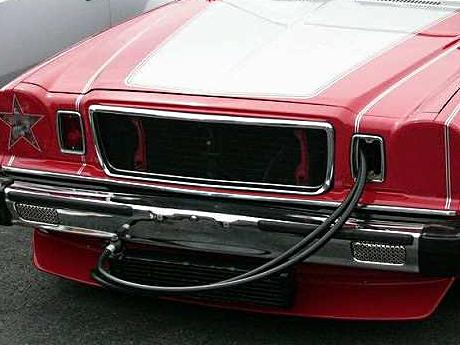Bosozoku lifestyle: Shakotan boogie videos
Well, what better way to learn about bosozoku lifestyle than to view the Shakotan Boogie movie on video?
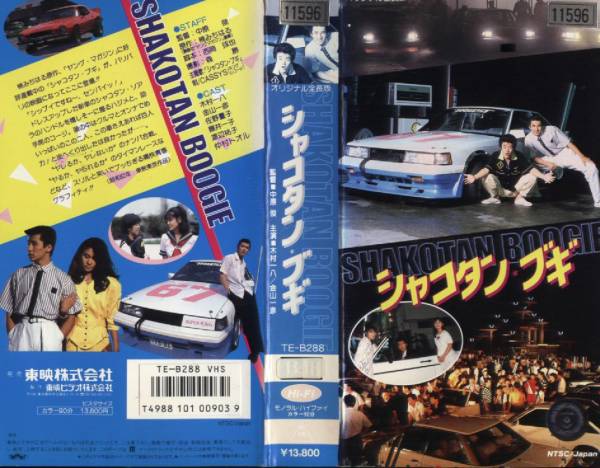
Shakotan Boogie (???????) on VHS
Lucky enough a couple of the good old Shakotan Boogie VHS tapes are up for grabs on auctions.yahoo.co.jp. Cheapest is only about 14 dollars… And what about this a nice Shakotan Boogie photobook?
Now where is that creditcard of mine??
How deep is your dish?
More auction rims: these 13J Hayashi Sakura rims were for sale up till last sunday. I already was familiar with the Sakura rims before but never this wide. They really look fantastic with a big lip like this one:
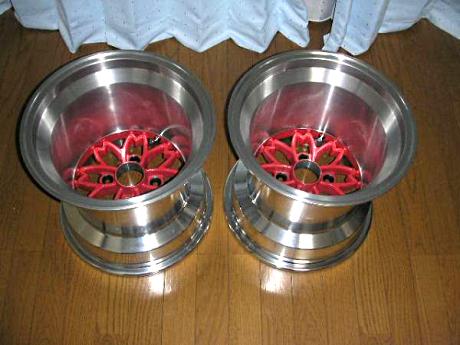
Deep dish 13J Hayashi Sakura rims
The rims itself are only a pair, so no full set. They have an offset of -78 which, according to my calculations, need about 15 cm of fender extenders to fit on my own car!
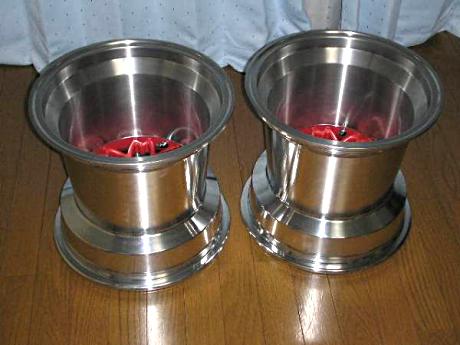
Deep dish 13J Hayashi Sakura rims
Even though these rims are back in production again since 2 years they really are something special!
by banpei with 5 commentsPopular Bosozoku cars: Tomica Nissan Skyline KDR30
Last week the poll decided the Tomica Skyline KDR30 as a winner in the sudden death between this car and the Impul Silvia Turbo S12. Therefore I feature a Popular Bosozoku Cars special this week: the Tomica Skyline RS Turbo KDR30! 🙂
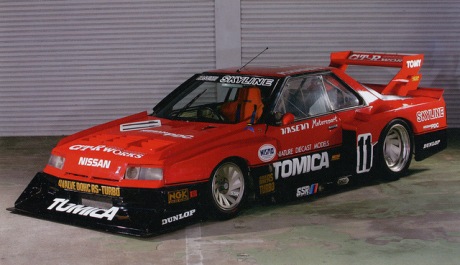
The Tomica Nissan Skyline RS Turbo KDR30 Super Silhouette
The Super Silhouette Formula was fully according to the rules of the FIA Group 5. In 1979 the rules were changed to Generation 4 in which the FIA allowed the so called “Special Production Cars” in which the FIA allowed cars falling in Group 1 to 4 can be modified extensively but restricted the width, the height (roofline) and the shape of the car to remain original (hence the silhouette name). The loophole was that is only accounted for the body of the car and not for the fenders and therefore cars were still standard width but featured the ridiculously wide fenders. Maybe you can best compare the Super Silhouette formula cars to the current modern DTM racers with their big winged silhouette cars.
In Japan these series were new and were used as a warm up of the Fuji Grand Champion of the year. After 1982 the FIA changed the rules of the Group 5 in favor of Group B, however it continued in Japan as opening races for the JSPC during 1983 and only two races were held in 1984.
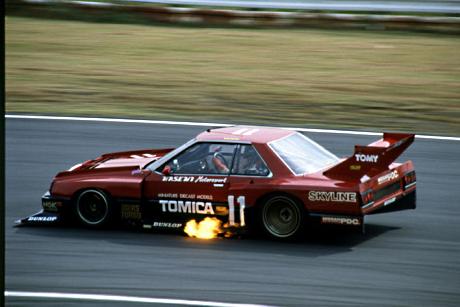
The Tomica Skyline was renowned for spitting flames each downshift
After years of absence in production car racing Nissan intended to fully dominate the new group 5 series and returned with a set of Fairladies in 1979 and lost. In 1980 and 1981 private teams used a Nissan Violet 710 and a Silvia S110 and Nissan supplied them with parts like the LZ20B engine. The S110 only had two wins during those early years In 1982 they teamed up with Nissan and had a line up of the Skyline KDR30, Silvia S12 and the Bluebird 910.
And it worked: the Tomica Nissan Skyline KDR30, driven by Hasemi Masahiro (a former KPGC10 driver), dominated along with the Impul Silvia Turbo S110 in 1982 and the S12 in 1983, driven by Hoshino Kazuyoshi, the Super Silhouette formula series in 1982 and 1983 while being backed up by the Bluebird KY910. The Skyline KDR30 had a total of 7 victories: 2 in 1982 and 5 in 1983!
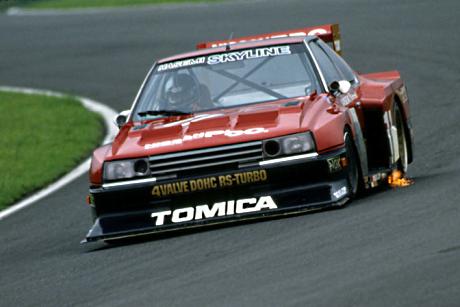
The Tomica Skyline rushing to victory
You can see an interview with Hoshino Kazuyoshi and Hesemi Masahiro in this video. (unfortunately no embedding…)
Based upon the shape of the Nissan Skyline RS R30 the Tomica Skyline KDR30 was one of the most powerful cars in the Super Silhouette formula. Note that the Skyline RS Turbo only was for sale after the Tomica Skyline KDR30 raced for over a year! Also the RS-X Turbo Tekamen (???), as known as the Iron Mask, was launched in august 1983 which is almost at the end of Super Silhouette Formula era. The car never got facelifted to match up with the RS-X new front end.
Huge spoilers were needed to keep the car on the ground and even the rear end was lengthened to create even more downforce on the rear wheels. To keep the weight down (1005kg!) the car featured a tubular chassis with only partly a monocoque design of aluminum. All exterior was made from fibreglass and of course they needed a 2 liter racing spec engine to power this beast.
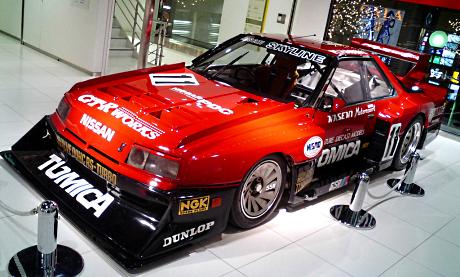
How we often see the Tomica Skyline nowadays
The car featured the LZ20B engine. The LZ engine was back then the racing spec engine by Nissan and was based upon the L engine (many flavors) featuring a different head with a 16 valve twin cam. So the LZ20 was basically an overbored L20 engine (2082 cc instead of 1952 cc) with a special twin cam 16 valve head on it. The LZ20 engine was first used in a Nissan Violet A10 doing a safari rally but featured in many formula race cars later on.
The LZ20B used in the Skyline KDR30 was improved a lot over the years and featured electronic fuel injection and turbo charging through a T05B turbo. It was able to output 570ps (563bhp) at 7600 rpm and delivered 539 nm at 6400 rpm. The competing Silvia Turbo S12 and Bluebird 910 did also have the same LZ20B engine but both were entirely different tuned: some sources say the Silvia was only capable of 500ps and it did that at 8000 rpm. For the Silvia it didn’t really matter because it was much more streamlined than the Skyline and Bluebird.
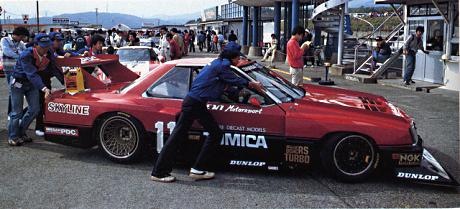
The Tomica Skyline being pushed from the pits to the track
To keep the car on the track SSR provided the front rims of 15 inch and the rear rims of 19 inch in diameter. Note that the turbine lookalike rims only featured during the 1983 and 1984 season: in 1982 it featured Rays mesh type rims as seen in the picture above. The Dunlop tires were 270mm wide and at the rear 350mm, that is almost as wide as the current Formula one spec! Also the car was slowed down by four Lockheed disk brakes with four pistons per caliper!
In this old video you can see a highlight on the Skyline KDR30:
You can really see the LZ20R, the intercooler and the big lockheed disk brakes well in this video.
And in part 2 you can see it perform during a race:
Also this car gets confused with the Group C Nissan Skyline RS Turbo C which also featured the number 11 in some occasions. It looks quite similar but is not the same car. This car was ordered by a Nissan dealer in South Africa to feature in the Kyalami 9 hour endurance race in 1982 and had to meet the Group C specifications. It is lower than the Super Silhouette Formula counterpart (different height regulations) and has a different front and rear. The car was used in a few other Group C races as well but was never really successful.
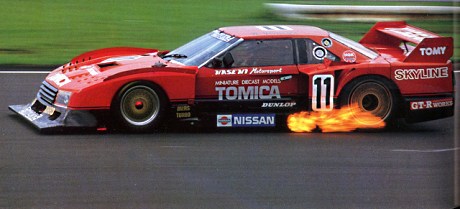
Nissan Skyline RS Turbo C (Group C) is a different car!
Nowadays the car is still regarded as an incredible piece of history. It marked the return of the Skyline to the racing circuits which was very important for the Japanese audience. It even resulted in the hope the GT-R designation would return on the Skyline but Nissan waited with that till 1989 with the debut of the R32. You can still buy lots of merchandise around the Tomica Skyline KDR30 Super Silhouette formula: diecast models, model kits, posters and it even featured in Gran Tourismo 2 as a price car in the 80’s Sports Car Cup. 😀
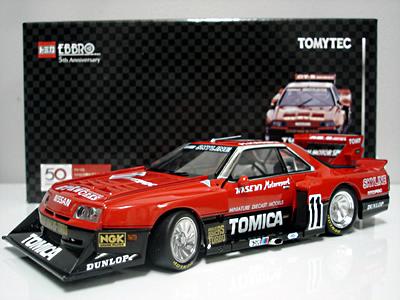
The Tomica Skyline available as diecast model from Ebbro
The funny thing is that I was unable to find a Tomica diecast of the Tomica Skyline KDR30 Super Silhouette so far… So if anyone found one: let me know! 😉
I really understand why the looks of this car got copied in so many ways: it looks like an unleashed beast when driving on the circuit! It was an incredible and outragious car at the same time! And eventhough it only shared its front and tail lights with the original Skyline RS it is still an icon for the whole Skyline R30 generation.
by banpei with 5 commentsMeeting monday
Imagine driving to a bosozoku car meeting with all your boso friends and one of the cars is lowered so extreme that sparks are flying around all the time!
That pretty much sums up the following video of this extreme Crown:
Last weeks poll results
Last week we had the sudden death between the Impul Silvia Turbo S12 and the Tomica Skyline DR30 super silhouette racers and the outcome isn’t a tie anymore: the Tomica Skyline DR30 wins with a large distance from the Impul Silvia Turbo S12! To celebrate this we have some nice footage of the Tomica Skyline DR30 on a Nismo Festival:
Enjoy! 🙂
So, this week we seek the answer to the following: how big should oil coolers be?
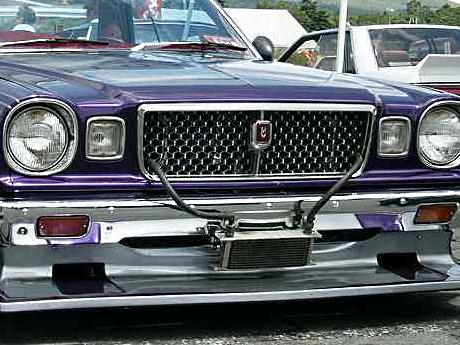
A small oil cooler looks best!
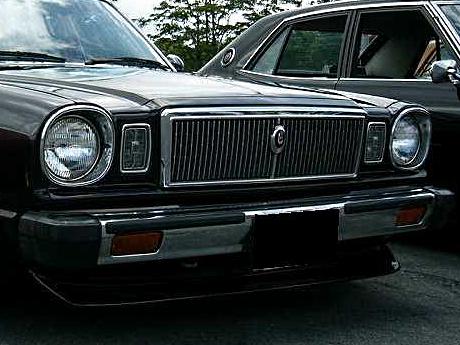
Oil coolers? No thanks, better keep the looks clean!
